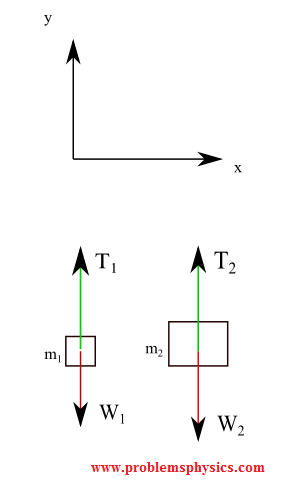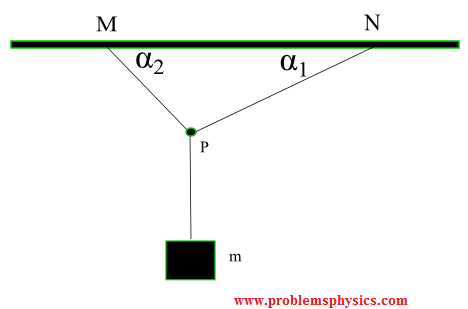Solution

a)
1) Free body diagram of m1
W1 + N + Fk + T = (m1|a| , 0) (second law of Newton vector equation) , where |a| is the mangnitude of the acceleration
where
W1 = (W1x, W2x) = (-|W1|sin28° , -|W1|cos28°) , weight of block 1
N = ( 0 , |N|) , normal force
Fk = (-μk |N| , 0) , force of friction opposite motion assuming m1 moving upward
T = (|T| , 0) , tension of string.
Rewrite above equation using components
(-|W1|sin28° , -|W1|cos28°) + ( 0 , |N|) + (-μk |N| , 0) + (|T| , 0) = (m1|a| , 0)
equality of x components
-|W1|sin28° + 0 - μk |N| + |T| = m1|a| , equation (1)
equality of y components
- |W1|cos28° + |N| = 0 which gives |N| = |W1|cos28° , equation (2)
2) Free body diagram of m2
W2 + T ' = (0 , - m2|a|) , where |a| is the magnitude of the acceleration.
where
W2 = (0 , -|W2|) , weight of m2
T ' = (0 , |T '|) , tension of string
rewrite above equation using components
(0 , -|W2|) + (0 , |T '|) = (0 , - m2|a|)
y components equal
- |W2| + |T '| = -m2|a| or |T '| = |W2| - m2|a| , equation (3)
We now use the fact that the tension in the string is the same in magnitude, hence
|T '| = |T| = |W2| - m2|a|
Substitute |T| by |W2| - m2|a| and |N| by |W1|cos28° in equation (1) to obtain
- |W1|sin28° - μk |W1|cos28° + |W2| - m2|a| = m1|a|
|a| (m1 + m2) = |W2| -|W1|sin28° - μk |W1|cos28°
|a| = g (m2 - m1 sin28° - m1 μk cos28°) / (m1 + m2)
Numerical application with m1 = 10 Kg and m2 = 30 Kg and μk = 0.4 , g = 10 m/s^2
|a| = 10 (30 - 10(sin28° + 0.4 cos28°)) / (10 + 30) ≈ 5.4 m/s^2
b)
|T'| = |T| = |W2| - m2|a| = m2 g - m2 |a| = 30(10 - 5.4) ≈ 138 N
|











